Indra's Web
As part of the research project ‘And the earth along… Tales about the making, remaking and unmaking of the world’ L’Internationale Online publishes Indra’s Web, the specualtive fiction short story by acclaimed writer Vandana Singh. Indra’s Web tells the story of Mahua, the town of Ashapur, its Suntowers and the new smart energy grid that hopes to secure the future of the biosphere itself. The story offers a pathway in to explore entanglements of humans, non-humans and technology that propels ‘And the earth along …’
Mahua ran over the familiar, rock-studded pathway under the canopy of acacia trees, her breath coming fast and ragged. She would have to stop soon, she wasn’t as young as she used to be, and there was a faint, persistent pain in her right knee—but she loved this physicality: heart thumping, sweat running down her face in rivulets, the forest smelling of sap and animal dung, grit on her lips from the dust. The forest was where she got her best ideas; it was an eternal source of inspiration. It was why her work was getting recognition across the world. But the forest didn’t care about fame or fortune—here she was just another animal: breath and flow, a kite on the wing, a deer running.
Running, she liked to have the net chatter going on in the Shell in her ear: Salman monitoring the new grid, Varun and Ali reporting on the fish stocks in the artificial marshland by the river, Doctor Sabharwal’s monitor relaying Mahua’s grandmother’s condition at the hospital: stable, stable, stable, still on life support. Thinking about her grandmother’s stroke made Mahua feel like she was about to fall into a pit of despair; she distracted herself with the reminder that she had promised Namita she would try out the myconet music app during this morning’s run.
‘It’s just for fun, Mahua-di, but try it, you’ll like it.’ They were so anxious about her, these young people, knowing she was not quite herself these days. Moved and perversely annoyed by their concern, she had spent some hours with them in the Biosystems lab learning the app…
There is a fungal network, a myconet, a secret connection between the plants of the forest. They talk to each other, the acacia and the shisham and the gulmohar tree, in a chemical tongue. They communicate about pests, food sources, the weather, all through the flow of biomolecules through the fungal hyphae. Through this network, large trees have even been known to share nutrients with saplings of the same species. Mahua’s protégé, Namita, is part of the team that helped decipher (to the extent that humans can) this subtle language. In the forest they have planted sensors in the soil to catch some of the chemical exchanges between plants.
The signals are fed back into the interpreter and then analyzed. Some members of the team have made music from the signals: convert the concentration of a certain biochemical transmitter changing in real time into succession of notes where the duration indicates the strength of the transmitter. Add a few other transmitter signals as sounds of a slightly different frequency and you’ll get a sometimes musical chatter that is at once soothing and intriguing. Mahua is new to this and she’s never tried it out in the forest before. She’s always encouraged play in their research—it is not only fun, but important, she tells them—play leads to new insights, shakes up pre-conceived notions… And now they need the relief of play, after having spent the past few months calculating and putting in place Ashapur’s first smart energy grid, the Suryanet, modelled on the myconet itself.
Mahua turned on the app. As she ran she picked up information from the closest few sensors so that she had a ‘picture’ that changed in time and space. At first she heard nothing but the soothing semi-music of the various tones. Then the surprise came: a peculiar sensation rather like vertigo, a kind of slippage, as though she was leaving her human self behind, dissolving into something infinitely vast. It was like looking up at the Milky Way from the top of a high mountain on a clear night. She had always been quick to discern webs of relationships—it was her particular skill, after all—but this was different. A feeling like an electric shock coursed through her, a long moment of recognition, as though her deepest mind already knew this pattern. The effect was so startling that she stumbled over a tree root. Then the Shell beeped urgently in her ear, and the spell broke.
It was Salman, calling out an alert: Suntower 1 had failed. There were random fluctuations going on all over the new energy grid that nobody could explain, Salman said, breathless. It seemed likely that the Suryanet, so painstakingly put in place over the past few months, the result of years of effort, on which everyone was depending for the survival of Ashapur and maybe of the biosphere itself—the Suryanet could be a spectacular failure.
One of the things Mahua had learned from her grandmother was that when trouble struck, unless it needed immediate attention, it was good to slow down and meander a little. So she wandered to the top of the ridge, where the height enabled her to see Ashapur in all its glory.
A former slum, it used to lie on the edge of Delhi like a sore. In the last ten years the Ashapur project had transformed it. The hutments of cardboard and tin had been replaced by dwelling houses built mostly by the residents themselves with traditional materials: a hard mixture of mud, straw, rice husk, surfaced with a lime-based plaster. In use for thousands of years, then forgotten, and revived in the 20th century by visionary architects like Laurie Baker, the material had so far survived nearly ten years of baking heat and monsoon rains. The majority of the residents were the original slum inhabitants, climate refugees from the drowned villages of coastal Bangladesh, who had been transformed by the Ashapur project. When Mahua looked at Ashapur from this height she saw mostly an uneven carpet of green and silver—rooftop gardens broken by the gleam of solar panels, and corridors of native trees, neem, khejri, gulmohar, running down the hill from her forest like green arteries through the settlement.
Above this vista rose the suntowers like a surrealist’s dream: four functioning, and the fifth under construction, their tops capped by sun-tracking petals of biomimetic material containing tiny, environmentally benign artificial cells, the suryons, that drank up photons. The largest, oldest facility was Suntower 1, now mysteriously moribund. Ashapur was nearly self- sufficient in food and energy, and with the new grid, the Suryanet, they should have been able to donate power to the Delhi grid, thereby silencing the naysayers and establishing the need for a thousand Ashapurs. Four solar plants making hydrogen from the breakdown of water—sewage-fed biogas plants—enormous energy savings from building construction and layout (none of the buildings needed air conditioning)—numerous rooftops with solar panels—even greater energy savings from the fact that these former villagers were traditionally energy-efficient, living in clusters, throwing away nothing, re-using almost everything. And all the energy sources were now connected on the Suryanet. Yet…
She took the long way to Suntower 1. She always found it calming to walk through Ashapur. The narrow roads were not built on a rectangular pattern but instead curved, moving obligingly around an ancient peepul tree or dwelling. Her designers had kept the street pattern of the original slum but had improved on it, allowing room for people to congregate in front of this chai-house or in that niche, so that old women could gossip and mind the little ones, and the wandering cows and pariah dogs had room to rest. Here, right at the corner she was passing now, between an internet café and an agricultural research center—here’s where a potential foreign funder had stopped her six years ago. ‘I don’t understand,’ he’d said, ‘why this town is so untidy. There’s no order, no proper grid for the streets. It looks very inefficient. And the roads are too narrow for traffic flow! Where are your cars?’
In response to this sort of thing her grant-writing team had developed a slide show— apparently some of these potential funders could only understand things if they were in a powerpoint presentation—to show how optimal city function could be best achieved by having connectivity at multiple scales. Large, coarse, fewer pathways for cars, smaller, more dense ones for people. And for other animals as well as people, the green corridors that branched into the city, maintaining biodiversity and the psychological benefits of closeness to nature, while providing Ashapur with cooler summers, seasonal supplies of fruit and nuts, and raw material for a new cottage industry in crafts.
Now she entered Energy Central, the building below Suntower 1. It was cool here—the thick mud-based walls ensured that—and the curving stairway with its murals gave no hint of the troubles of Suntower 1, rising high above the roof. At the lab door there was the familiar sign that Salman had installed by encouraging a vivid green moss to grow on an earthboard so that it spelled out the motto of the Biomimetic Energy Materials Lab—To Learn from Nature, not to Exploit Her. His colleagues had teased Salman about the irony of exploiting a moss to write these noble words, but the moss seemed to have decided things for itself. It spelled ‘To learm from Natur, not to Explod,’ which still made her smile.
Inside there was a dim coolness and the glow of multiple terminals. A meeting was in progress, chaotic and impassioned as usual. Arguments and discussions in Hindi, English and Bangla: Salman, deep in agitated conversation with Namita and Ayush, Hamid, a young trainee who had once begged on the streets as a child, patiently explaining the situation to the boy who had brought the tea. Mahua stayed just inside the door, unnoticed, letting the words flow around her, sensing the web of ideas and feelings raging through the room.
‘...no guarantee that modeling the Suryanet on the myconet was going to work—why risk everything on one crazy idea?’
‘…calculations, have you forgotten we did the entire constructal analysis? Besides, scale-free networks are everywhere…’
‘Nobody’s networked a suryon-based system before or allowed it to self-regulate! There were safer ways of doing this, better ways! But no, you have to go on about minimal control! It’s centralized control systems that make everything work!’
‘Yaar, stop being a control freak, OK? We’re just mimicking the natural control systems that exist in nature. Stop panicking… obviously there’s a bug in the system somewhere…’
‘…oldest suntower, beta version of the suryons, it’s bound to fail…’
‘…not this quickly, idiot…’
Chanchal, from one of the terminals:
‘Salman, look at what’s happening to the other suntowers! Energy collection is now above average by 7 percent in 2, 3 and 4! But… dekho, boss! These numbers! More inflow than outflow. There’s a major bug somewhere!’
‘Or energy is no longer conserved,’ someone said, as there was a mass movement to the terminal.
Mahua found herself curiously detached from the mayhem. A signal sounded repetitively in the lab like the beep of the monitor in her grandmother’s hospital room.
She is remembering the first time she sees these young people in various colleges and universities, nearly a decade ago. They are bound for brilliant careers as engineers, managers, CEOs, their upturned faces curious, skeptical, polite. She has nothing to offer them so she gives it all she has.
‘I come to you with empty hands,’ she says. ‘I can’t offer you much money. I can’t offer you big houses, two cars, five air conditioners. Nor the jet-setting lifestyle with its cross-continental board meetings, the wife or husband who will ultimately cheat on you, the children who will drive you crazy. What I can give you is a chance to be part of a revolution. A revolution that might just save our earth from the climate crisis. One that comes up with not just new technologies but new ways to live that are more whole and deep and satisfying than anything you’ve known. Most of you have enjoyed being in college. You are the best of the lot, the ones who get high on learning, and on the company of like minds. The Ashapur project is like college, except that you have the chance to learn by doing, and to do more good than youever could with the life now laid out for you. We will take care of your housing and healthcare, and you will get as much salary as I do. Which isn’t saying very much. But you’ll get up every morning knowing that by the end of the day you would have made a new discovery, a new friend, a new way of looking at the world. You will blow old paradigms out of existence on a near-daily basis. I promise you that. Are you with me?’
Some of the faces look incredulous, even mocking, but there are others who light up. She’s struck a chord deep inside them. She lets out a deep breath of relief.
Now she thought: had she betrayed them after all? Would they forgive her, if this turned out to be the disaster she had always feared?
Finally they noticed her, surrounded her, pulled her before the screens, presented their arguments before her. ‘Look,’ she said at last. ‘You know how to check everything according to the protocols. Do that. Then come up with some wild theories and shake up the possibilities, but don’t panic. We can survive a couple of power failures; it isn’t as though we haven’t grown up with them. The hospital seems to have enough power right now; so do most key-need places. Make sure backup generators are working and just wait.’
Mahua, was named by her long-dead mother because she was born under a mahua tree on the way to Delhi. The two of them—mother and grandmother—had migrated from their village in Bihar after her father died. She grew up in the slums, where her mother died when Mahua was eleven, only three months before their fortunes changed.
So it’s been Mahua and her grandmother, who now lies in a hospital bed after a stroke, kept alive by the machines that surround her. The woman with the temper and the loud laugh, who always had something to say, now looks at Mahua with wide, frightened eyes. She can’t speak but she can croak a little. Sometimes she lies peacefully while Mahua holds her hand, but at other times she seems to be trying to tell Mahua something. Mahua, who can discern connections with a skill that frightens her sometimes, cannot tell what her grandmother is trying to say. She tries to reassure her—there are all kinds of new techniques the surgeons want to try.
There’s hope.
When she was a child Mahua used to follow ants as they moved purposefully across the dirt floor of the room. She wanted to know where they were going in such a hurry, and whether their abrupt pauses and frantically waving antennae had some hidden significance. Later she came to realize that the ants followed invisible trails across the floor—that the world was full of secret communication channels, like the electric wires between poles that rose above the tenements. It was as though some inner sense within her had opened because following this realization she was suddenly aware of walking through a tangled spider’s-web of relationships. The gossiping old women who sat around her mother’s sewing machine, jabbering about this and that, speaking as much with meaningful glances and shakes of the fist as with their cracked voices—the way people looked at each other, signifying feelings and relations, how people spoke as much with their silences as with words. Even the winds that brought the monsoon rains had some sort of pattern or cycle, a network in both time and space. She was delighted with this discovery but she didn’t understand it then.
The narrow little lanes of the slum are like spider webs, intersecting at odd angles, curving around hutments, like a stream of water. Everywhere there are people and smells and here and there an internet café or a soda stand or a chaatwala. In this mess and confusion someone’s placed a computer in a niche on a wall and the street kids play with it between school and errands and work. After a long time she’s found the courage to go up to the shiny, inviting screen, the keyboard, where the letters are in Hindi—thank goodness she can read—but the screen itself has a number of floating objects, tumbling and combining when they meet. She stares at it, mesmerized, and after a while she tries a hesitant tap on the keyboard. Three days later she’s learnt that she can save the game in her own name. She keeps playing. In a strange way it makes sense the way the slum itself makes sense. It’s pattern and rhythm, although she will not know those words for a long time. At the end of this period there is a person at her door, and a scholarship to go to a really good school with housing for herself and her grandmother, and guidance from the Slum Children’s Education Trust which is inhabited by kindly aunties.
At thirteen Mahua fell ill. She diagnosed the malady herself as anxiety brought on by acute apophenia. Becoming sensitive to networks and relationships, she saw connections everywhere, even when they weren’t actually present. This drove her crazy but she didn’t want to take medicines to suppress her ability for pattern recognition. Instead she resolved to train her mind to distinguish between false apparent connections and real ones—the only way to do that was to study the world. With this determination, her new school, with its snooty, unfriendly girls and regimented routine, became a matter of finding the grain in the chaff, the flashes of joy in the misery.
For instance: Mrs. Khosla introducing the concept of energy in her usual monotone. A classroom full of bored children, and only Mahua sitting up, recognizing that she has just been handed the golden key, the central concept, that through which the entire universe interacted, the currency of all communication. Energy! And its conservation law. All real systems were governed by fundamental laws that acted as constraints. That is how you differentiated apparent relationships from real ones!
But as she stands in the hospital room looking at her grandmother (the old woman is made almost alien by the tubes and wires of the life-support system), she feels that she has failed after all. What good is it to be able to sense patterns and relationships when she can’t tell what her own grandmother wants to say? Tomorrow they’ll try once more to work with the eyelids to see if her grandmother can learn to communicate thus. But the old woman, always contrary, has apparently refused to cooperate. What does she want? Not death, surely, not before exploring all the options. Her grandmother has such a zest for life. She’d opened a small business of her own at the age of seventy-three, making simmerpots. This is a pot is made of mud and straw rather like the walls of the dwellings but in different proportions—and it is one reason why energy usage is so low in Ashapur. You cook your stew or curry on the stove for two minutes, until it is simmering nicely, and then you take it off the heat and put it inside the simmerpot. The simmerpot is such a good insulator that the food keeps cooking in there for hours afterwards.
Not her grandmother’s invention—it had been in use in her village for centuries. But here only her grandmother and a handful of trainees know how to make it, and when you walk around Ashapur you see simmerpots everywhere, on kitchen window-sills and in the large community dining rooms. And the woman who made it popular and indispensable, who had such vivacity at eighty-one that she could gossip non-stop with her neighbors until three in the morning, now lies hooked up to machines like a captive, with death in her eyes.
Mahua has finally seen it. Her grandmother wants to die.
That evening Mahua goes walking down the lanes of Ashapur, following a hunch.
There before her is Suntower 5. While physically connected to the grid, it is still under construction; only the skeletal frames of the petals are complete, the tubing through which the suryon-embedded substratum will eventually be pumped up. There is a sleepy boy in the control room, one of the former street urchins assigned to do some after-hours caretaking. Tousling his hair and sending him off for some tea, Mahua sits before the computer. Suntower 5 is the newest design; the suryon distribution architecture is so complex and bug-ridden that it will take a while to implement. Since the work began on the grid so many months ago, nobody has been able to attend to Suntower 5.
It doesn’t take Mahua long to zoom into an image of a petal atop the tower. At first she sees just the skeleton, but there, between the supports is a new, delicate, lace-like integument. The suryons are distributing themselves, filling in the empty spaces. Somehow the Suryanet has not only decided that Suntower 5 should be functional, but has allocated resources to it, which is why Suntower 1—the oldest, and least efficient—has shut itself down. Temporarily, perhaps, but who knows? Does a sufficiently complex network give rise to its own wisdom? She sends a hint to the team at Suntower 1. By the morning they will have figured it out. She sips her tea, talks to the sleepy attendant. At last she goes back into the night, thinking about the networks in which she exists, and how tomorrow a major node on which her very life depends will be taken off-line forever. She thinks of the forest on the ridge. The forest lives on because it accepts death—with every twig that falls, with every ant that meets its annihilation, a thousand life-forms come into being. Danger walks there and so its denizens learn adaptation; here, too, we must rebuild ourselves, define ourselves anew with each loss, each encounter. She remembers a story her grandmother once told her about Indra’s Web, the ultimate cosmic network in which every node mirrors the whole.
In the twilight hush there are sleepy sounds of birds settling in the trees; a family of rhesus monkeys chatter softly in a rooftop garden above her head. A radio is playing an old film song, very softly. It is a warm night; someone has a khas-khas cooler working, the sound of the fan almost drowning out the steady drip of water. If she wants, her Shell unit can pick up energy data from the sensors in each dwelling place. She loves this marriage of the traditional and the new, the forest and the city, this great experiment, this marvel that is Ashapur, City of Hope.
The views and opinions published here mirror the principles of academic freedom and do not necessarily reflect the views or positions of the L'Internationale confederation and its members.
Related activities
Climate Forum
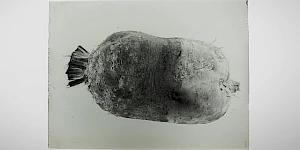
The Climate Forum is a space of dialogue with respect to the concrete eco-political operational practices implemented within the art field.
The Climate Forum is a space of dialogue and exchange with respect to the concrete operational practices being implemented within the art field in response to climate change and ecological degradation. This is the first in a series of meetings hosted by HDK-Valand within L'Internationale's Museum of the Commons programme.
The series builds upon earlier research resulting in the (2022) book Climate: Our Right to Breathe and reaches toward emerging change practices. It asks: How might the speculative and critical insights framed within the registers of the discursive, the affective, and the symbolic be operationalised within everyday working? While the wider agenda of the series is to consider institutional practices, the first session maps some of the ways ecopolitics are formulated by artist and activist iniatives.
Register here.
The Soils Project
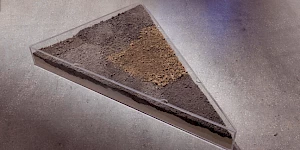
The Soils Project, is part of the eponymous, long term research initiative involving Tarrawara Museum of Art, Wurundjeri Country, Australia, the Van Abbemuseum in Eindhoven, Netherlands and Struggles for Sovereignty, a collective based in Yogyakarta, Indonesia. It works through specific and situated practices that consider soil, as both metaphor and matter. A further iteration of the project will open at the Van Abbemuseum in May - September 2024 as part of Museum of the Commons.
The Soils Project has been in development since 2018. An international collaboration between three organisations, and several artists, curators, writers and activists, the project has manifested in various iterations over several years including a three-part public webinar series titled The Soils Project: groundwork, and a two-week workshop, titled The Soils Project: On Country, for participating curators and artists. With a curatorium comprising arts workers from TarraWarra Museum of Art, the Van Abbemuseum, and Struggles for Sovereignty, the project’s approach seeks and facilitates opportunities to listen to diverse voices and perspectives around notions of caring for land, soil and sovereign territories.
Developed from this journey, The Soils Project’s forthcoming exhibition will embrace the deep histories of each participant’s location, examining the multiplicity of landscapes and environments, and the impact of colonisations and global industries on cultural heritage, land management and traditional knowledges.
Kyiv Biennial 2023
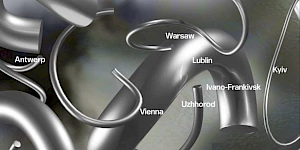
L’Internationale Confederation is a proud partner of this year’s edition of Kyiv Biennial.
Where are the Oases?

PEI OBERT seminar
with Kader Attia, Elvira Dyangani Ose, Max Jorge Hinderer Cruz, Emily Jacir, Achille Mbembe, Sarah Nuttall and Françoise Vergès
An oasis is the potential for life in an adverse environment.
Anti-imperialism in the 20th century and anti-imperialism today: similarities and differences

PEI OBERT seminar
Lecture by Ramón Grosfoguel
In 1956, countries that were fighting colonialism by freeing themselves from both capitalism and communism dreamed of a third path, one that did not align with or bend to the politics dictated by Washington or Moscow. They held their first conference in Bandung, Indonesia.
Cinema as Assembly
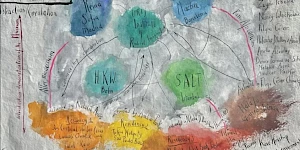
Cinema as Assembly investigates cinema as a space of social gathering and political engagement that prefigures and enacts forms of living beyond colonial capitalism.
Maria Lugones Decolonial Summer School
Recalling Earth: Decoloniality and Demodernity
Course Directors: Prof. Walter Mignolo & Dr. Rolando Vázquez
Recalling Earth and learning worlds and worlds-making will be the topic of chapter 14th of the María Lugones Summer School that will take place at the Van Abbemuseum in Eindhoven.
Non-Western Technologies for the Good Life
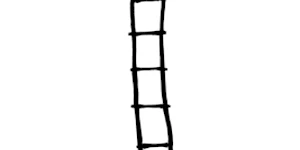
The experimental course 'Non-Western Technologies for the Good Life' (November 2023 – May 2024) celebrates as its starting point the anniversary of 50 years since the publication of Tools for Conviviality, considering that Ivan Illich’s call is as relevant as ever.
Archive of the Conceptual Art of Odesa in the 1980s
The research project turns to the beginning of 1980s, when conceptual art circle emerged in Odesa, Ukraine. Artists worked independently and in collaborations creating the first examples of performances, paradoxical objects and drawings.
Summer School: Our Many Easts
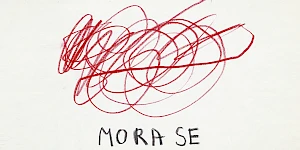
Our Many Easts summer school is organised by Moderna galerija in Ljubljana in partnership with ZRC SAZU (the Research Centre of the Slovenian Academy of Sciences and Arts) as part of the L’Internationale project Museum of the Commons.
Open Call – Summer School: Our Many Easts

Our Many Easts summer school takes place in Ljubljana 24–30 August and the application deadline is 15 March. Courses will be held in English and cover topics such as the legacy of the Eastern European avant-gardes, archives as tools of emancipation, the new “non-aligned” networks, art in times of conflict and war, ecology and the environment.
Song for Many Movements: Scenes of Collective Creation
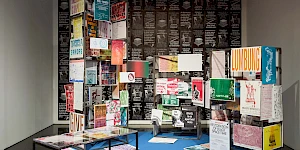
An ephemeral experiment in which the ground floor of MACBA becomes a stage for encounters, conversations and shared listening.
Open Call – School of Common Knowledge
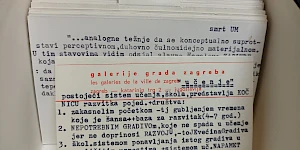
MSU (Zagreb), Van Abbemuseum (Eindhoven), MG+MSUM (Ljubljana), ZRC SAZU (Ljubljana) and L'Internationale invite applications for the new School of Common Knowledge (SCK) to be held in Zagreb and Ljubljana 24–29 May 2024. The School of Common Knowledge draws on the network, knowledge and experience of the L’Internationale museum confederation. Its ambition is to be both nomadic and situated, looking at specific cultural and geopolitical situations while exploring their relations and interdependencies with the rest of the world. The SCK is built on the basis laid by the Glossary of Common Knowledge project initiated by Zdenka Badovinac and Moderna galerija (Ljubljana) and continues its co-learning methodology.
Gathering into the Maelstrom
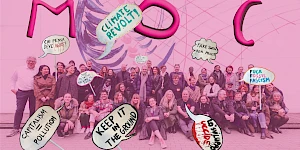
Gathering into the Maelstrom in Venice at Sale Docks is a four-day programme curated by Institute of Radical Imagination (IRI) and Sale Docks.
Related contributions
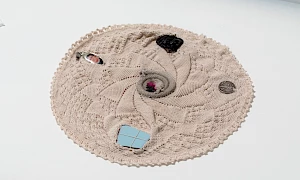
Decolonial aesthesis: weaving each other
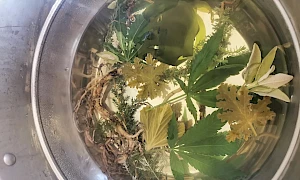
Climate Forum Readings
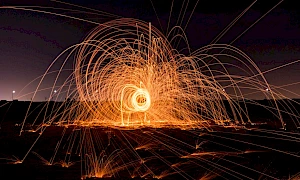
…and the Earth along. Tales about the making, remaking and unmaking of the world.
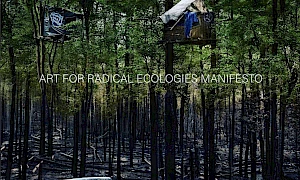
Art for Radical Ecologies Manifesto
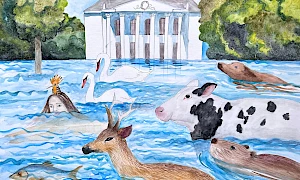
Pollution as a Weapon of War
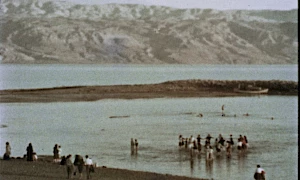
The Kitchen, an Introduction to Subversive Film with Nick Aikens, Reem Shilleh and Mohanad Yaqubi
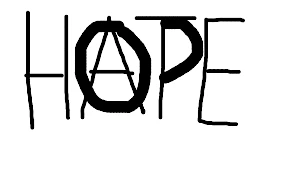
The Repressive Tendency within the European Public Sphere
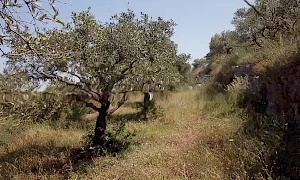
A Letter Inside a Letter: How Labor Appears and Disappears
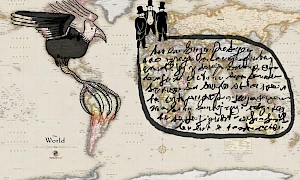
Troubles with the East(s)
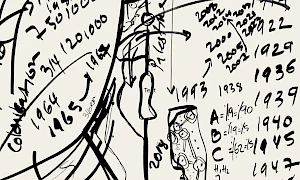
Right now, today, we must say that Palestine is the centre of the world
Body Counts, Balancing Acts and the Performativity of Statements
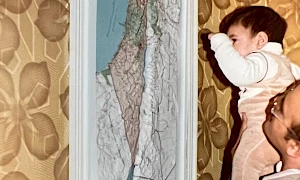
Until Liberation I: Learning Palestine
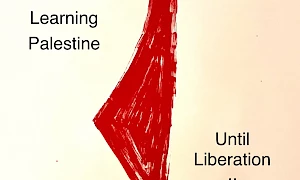
Until Liberation II: Learning Palestine
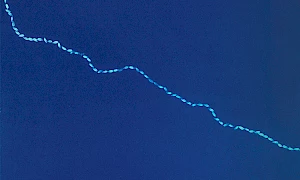
Seeds Shall Set Us Free II
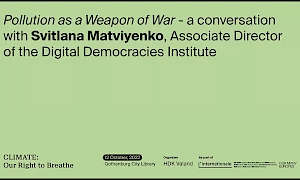
Pollution as a Weapon of War – a conversation with Svitlana Matviyenko
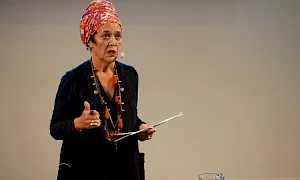
Françoise Vergès – Breathing: A Revolutionary Act
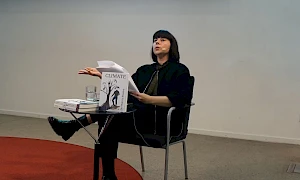
Ana Teixeira Pinto – Fire and Fuel: Energy and Chronopolitical Allegory
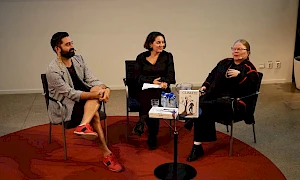
Watery Histories – a conversation between artists Katarina Pirak Sikku and Léuli Eshrāghi
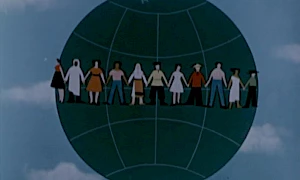
The Veil of Peace
Editorial: Towards Collective Study in Times of Emergency
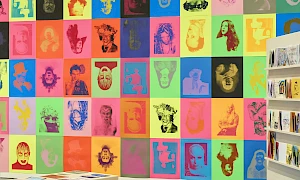
Song for Many Movements. Opening Performance Live on Radio Alhara
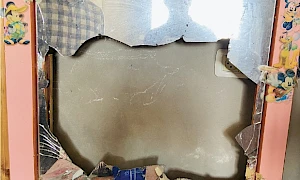
We Have Been Here Forever. Palestinian Poets Write Back
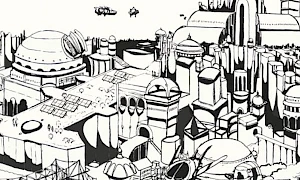
Indra's Web
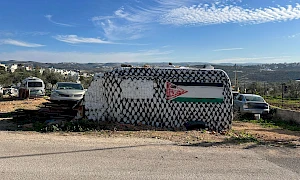
Diary of a Crossing
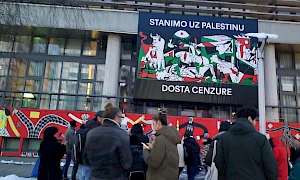
The Silence Has Been Unfolding For Too Long
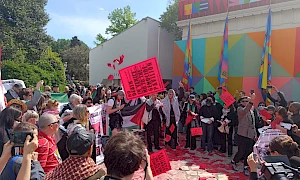
One Day, Freedom Will Be
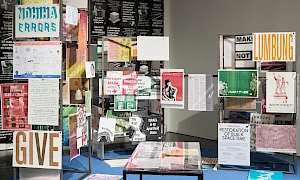
Everything will stay the same if we don’t speak up
